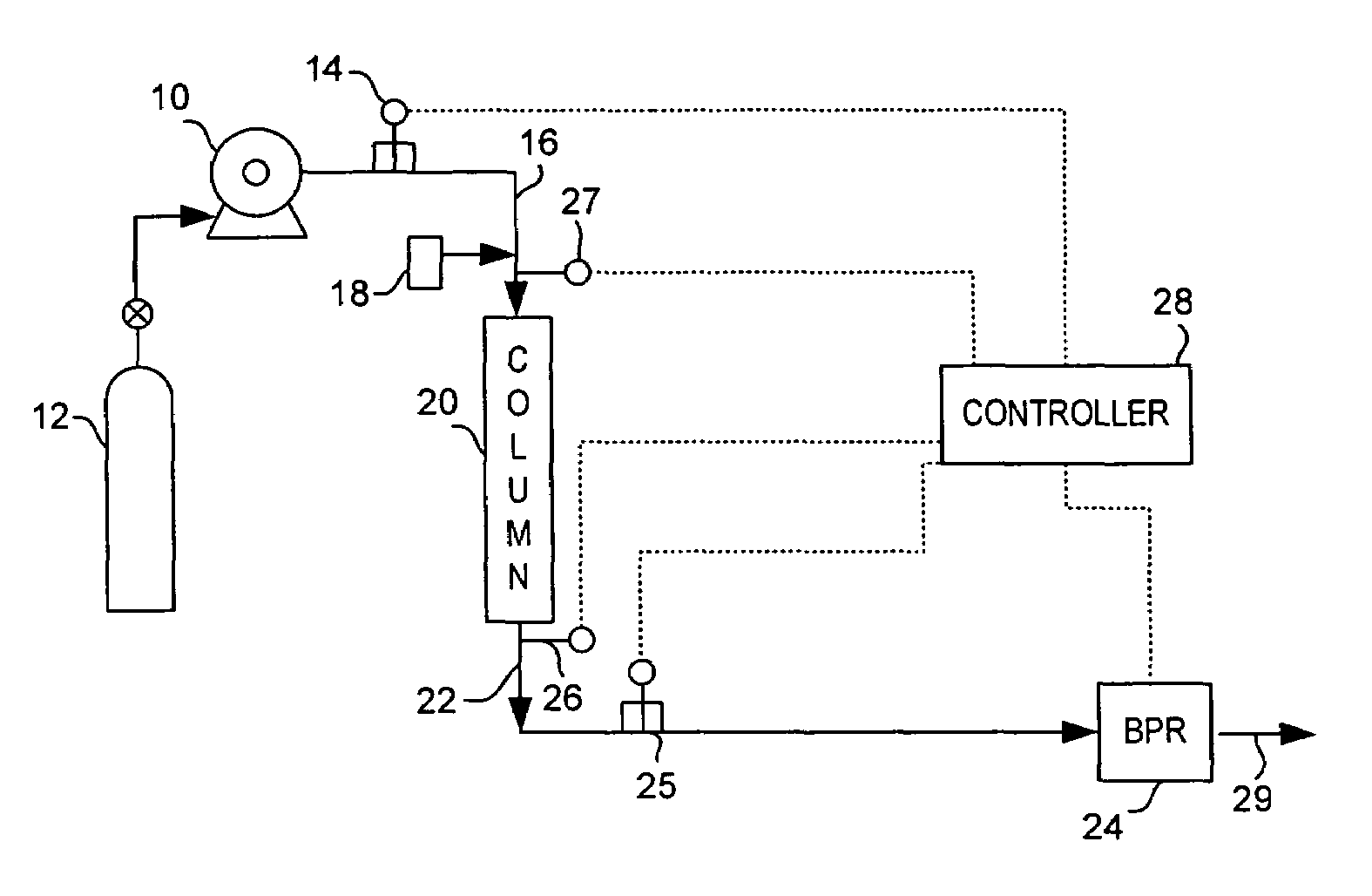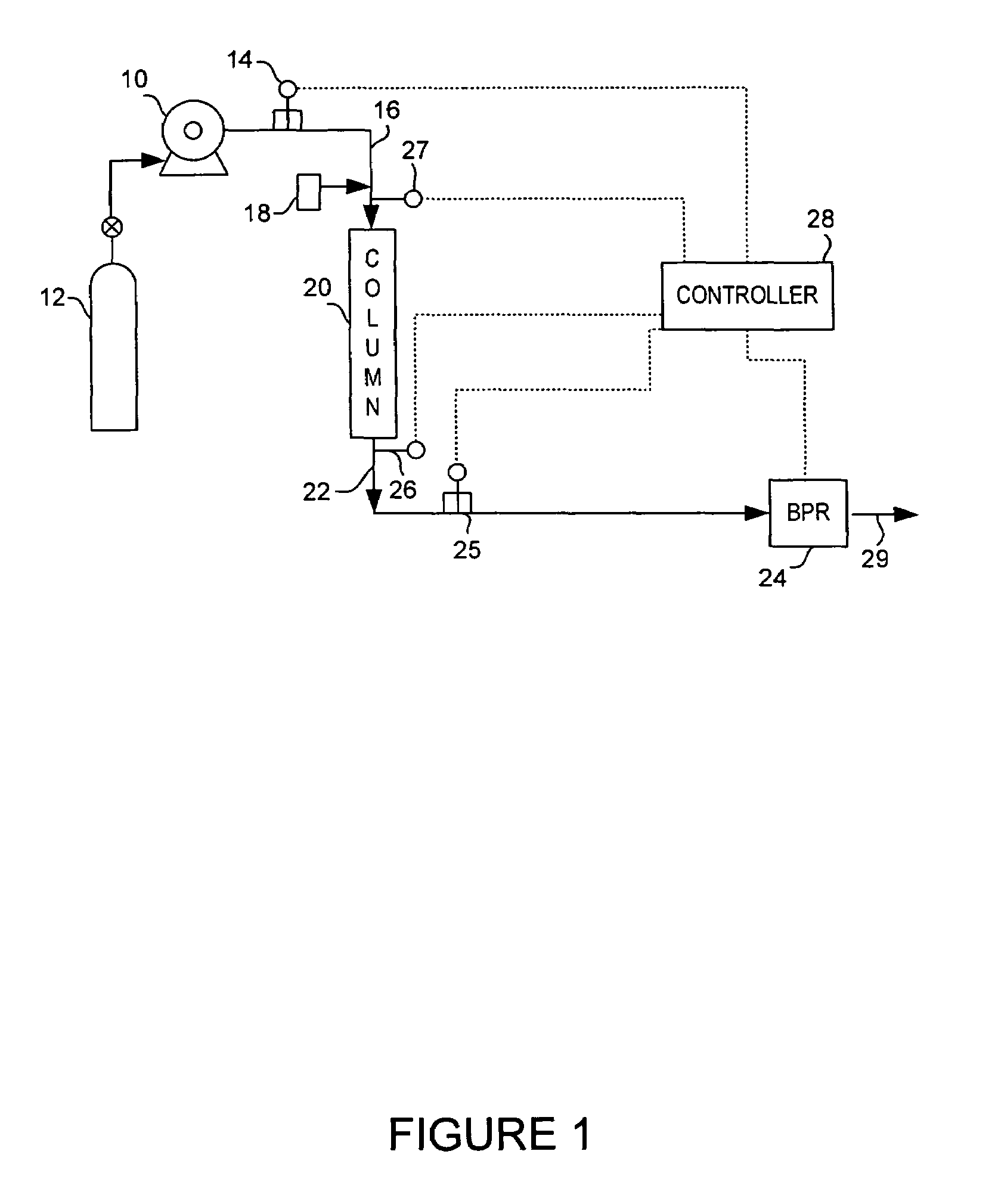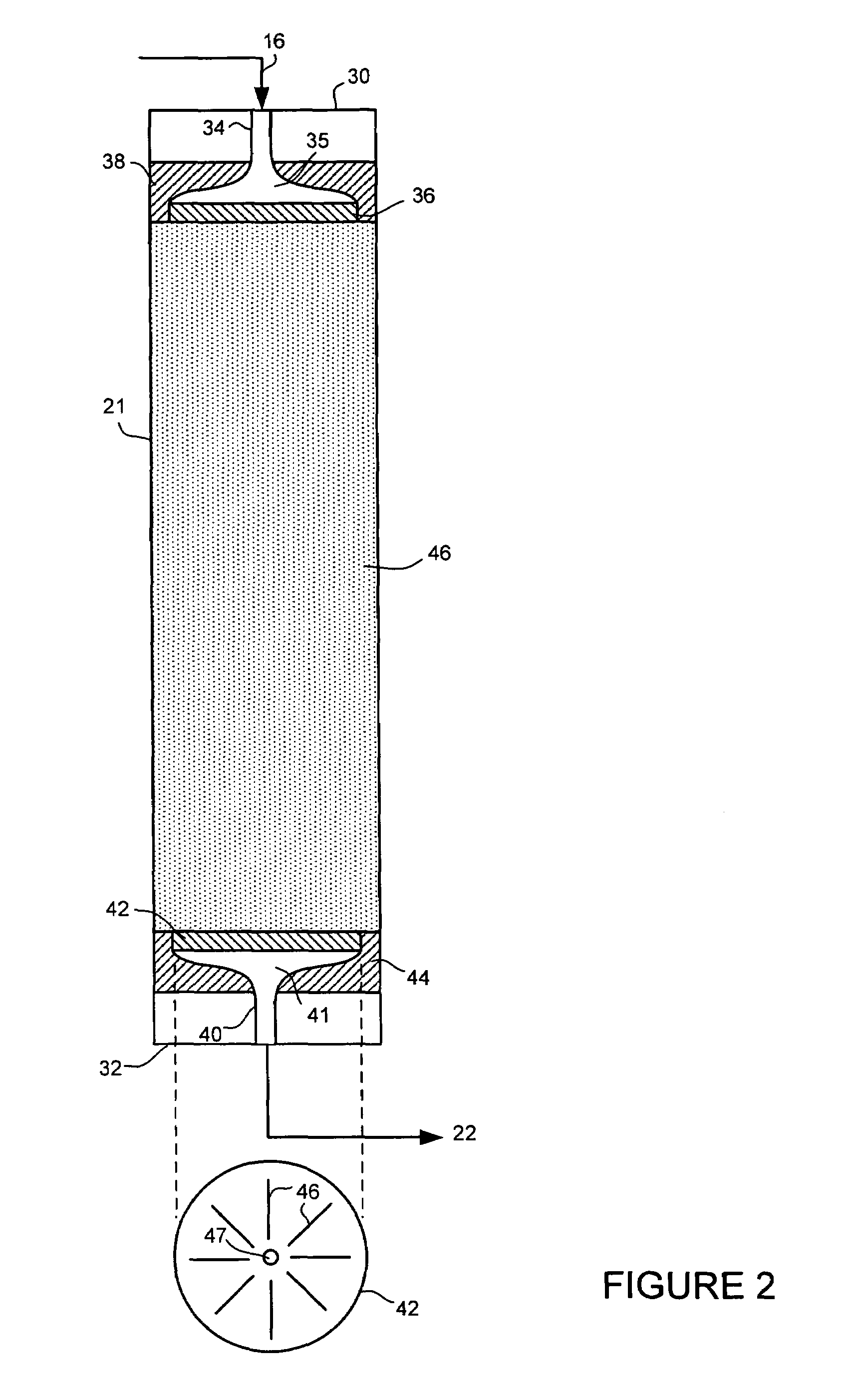De-pressurization scheme for chromatography columns
a separation column and depressurization scheme technology, applied in the direction of fluid pressure control, separation process, instruments, etc., can solve the problems of high waste solvent production, premature breakage, slow effective process time of samples, etc., to reduce the outlet pressure of the column, and reduce the negative effect of rapid pressure loss
- Summary
- Abstract
- Description
- Claims
- Application Information
AI Technical Summary
Benefits of technology
Problems solved by technology
Method used
Image
Examples
Embodiment Construction
[0017]FIG. 1 illustrates a preferred chromatography system implementing the de-pressurization process of the preferred embodiment. The figure shows a chromatography system, such as a liquid chromatography (LC), gas chromatography, high performance liquid chromatography (HPLC), or supercritical fluid chromatography system. However, it is understood that any system utilizing a device handling a mobile phase flowstream under pressure with a potential for damage to the device if pressure is lost could benefit from the present invention.
[0018]The system includes at least one pump 10 to draw liquid or gaseous mobile phase from one or more tanks 12. Pump 10 may include multiple pumps drawing from different tanks of modifier liquid and gas for mixing as a mobile phase fluid at high or supercritical pressure conditions. Depending up on the type of chromatography system, mobile phase can be pure or modified fluids including binary and tertiary fluids containing additives. As examples, pure fl...
PUM
| Property | Measurement | Unit |
|---|---|---|
| diameter | aaaaa | aaaaa |
| diameter | aaaaa | aaaaa |
| pressure | aaaaa | aaaaa |
Abstract
Description
Claims
Application Information
 Login to View More
Login to View More - R&D
- Intellectual Property
- Life Sciences
- Materials
- Tech Scout
- Unparalleled Data Quality
- Higher Quality Content
- 60% Fewer Hallucinations
Browse by: Latest US Patents, China's latest patents, Technical Efficacy Thesaurus, Application Domain, Technology Topic, Popular Technical Reports.
© 2025 PatSnap. All rights reserved.Legal|Privacy policy|Modern Slavery Act Transparency Statement|Sitemap|About US| Contact US: help@patsnap.com



